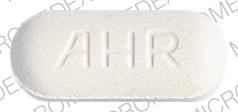Phenaphen With Codeine Side Effects
Generic name: acetaminophen / codeine
Medically reviewed by Drugs.com. Last updated on Aug 5, 2023.
Note: This document provides detailed information about Phenaphen with Codeine Side Effects associated with acetaminophen / codeine. Some dosage forms listed on this page may not apply specifically to the brand name Phenaphen with Codeine.
Applies to acetaminophen / codeine: oral elixir, oral solution, oral tablet.
Important warnings
This medicine can cause some serious health issues
Serious side effects
Along with its needed effects, acetaminophen / codeine may cause some unwanted effects. Although not all of these side effects may occur, if they do occur they may need medical attention.
Check with your doctor immediately if any of the following side effects occur while taking acetaminophen / codeine:
More common
- difficult or trouble breathing
- irregular, fast or slow, or shallow breathing
- pale or blue lips, fingernails, or skin
Incidence not known
- black, tarry stools
- bleeding gums
- blood in the urine or stools
- cough
- difficulty with swallowing
- dizziness
- fast heartbeat
- fever with or without chills
- general feeling of tiredness or weakness
- hives, itching, skin rash
- hoarseness
- lower back or side pain
- painful or difficult urination
- pinpoint red spots on the skin
- puffiness or swelling of the eyelids or around the eyes, face, lips, or tongue
- sore throat
- sores, ulcers, or white spots on the lips or in the mouth
- tightness in the chest
- unusual bleeding or bruising
- unusual tiredness or weakness
Get emergency help immediately if any of the following symptoms of overdose occur while taking acetaminophen / codeine:
Symptoms of overdose
- bloody or cloudy urine
- chills
- constricted, pinpoint, or small pupils (black part of the eye)
- dark urine
- headache
- increased sweating
- light-colored stools
- loss of appetite
- loss of consciousness
- nausea
- seizures
- stomach pain
- sudden decrease in the amount of urine
- unpleasant breath odor
- vomiting
- vomiting of blood
- yellow eyes or skin
Other side effects
Some side effects of acetaminophen / codeine may occur that usually do not need medical attention. These side effects may go away during treatment as your body adjusts to the medicine. Also, your health care professional may be able to tell you about ways to prevent or reduce some of these side effects.
Check with your health care professional if any of the following side effects continue or are bothersome or if you have any questions about them:
More common
- drowsiness
- lightheadedness
- relaxed and calm feeling
- sleepiness
Incidence not known
- difficulty having a bowel movement
- false or unusual sense of well-being
For healthcare professionals
Applies to acetaminophen / codeine: oral capsule, oral liquid, oral suspension, oral tablet.
General
The most frequently observed adverse reactions include drowsiness, lightheadedness, dizziness, sedation, shortness of breath, nausea, and vomiting.[Ref]
Nervous system
Acetaminophen-codeine:
- Common (1% to 10%): Drowsiness, dizziness
- Frequency not reported: Lightheadedness, sedation, medication over-use headache
Acetaminophen:
- Frequency not reported: Drowsiness, impaired mental functions
Opioids:
- Frequency not reported: Confusion, drowsiness, vertigo, dizziness, CNS excitation (restlessness/excitement), convulsions, headache, raised intracranial pressure[Ref]
Gastrointestinal
Acetaminophen-codeine:
- Frequency not reported: Nausea, vomiting, constipation, abdominal pain
Acetaminophen:
- Very rare (less than 0.01%): Pancreatitis
- Frequency not reported: Dyspepsia
Opioids:
- Frequency not reported: Constipation, GI irritation, biliary spasm, nausea, vomiting, loss of appetite, dry mouth, paralytic ileus, toxic megacolon[Ref]
Hepatic
Acetaminophen:
- Frequency not reported: Acute liver failure, hepatotoxicity, chronic hepatic necrosis, cytolytic hepatitis[Ref]
Psychiatric
Acetaminophen-codeine:
- Frequency not reported: Euphoria, dysphoria
Opioid:
- Frequency not reported: Confusion, changes in mood, hallucinations, mental depression, trouble sleeping or nightmares, tolerance or dependence[Ref]
Renal
Acetaminophen-codeine:
- Frequency not reported: Renal failure, uremia
Acetaminophen:
- Frequency not reported: Nephrotoxicity, papillary necrosis[Ref]
Hypersensitivity
Acetaminophen-codeine:
- Frequency not reported: Allergic reactions
Acetaminophen:
- Rare (less than 0.1%): Allergic reactions including skin rash, drug fever, mucosal lesions
- Postmarketing reports: Hypersensitivity including swelling of the face, mouth, and throat, respiratory distress, urticaria, rash, pruritus, and vomiting, anaphylaxis, angioedema
Opioids:
- Frequency not reported: Rash, urticaria, difficulty breathing, increased sweating, redness, redness or flushed face[Ref]
Cardiovascular
Acetaminophen:
- Frequency not reported: Toxic myocarditis, Kounis syndrome
Opioids:
- Frequency not reported: Bradycardia, palpitations, hypotension[Ref]
Genitourinary
Acetaminophen-codeine:
- Frequency not reported: Urinary retention or hesitance
Opioids:
- Frequency not reported: Urinary retention, ureteral spasm, antidiuretic effect[Ref]
Hematologic
Acetaminophen-codeine:
- Frequency not reported: Thrombocytopenia, agranulocytosis, anemia
Acetaminophen:
- Very rare (less than 0.01%): Thrombocytopenia, neutropenia, leucopenia
- Frequency not reported: Agranulocytosis, methemoglobinemia, pancytopenia, thrombocytopenia purpura, hemolytic anemia[Ref]
Dermatologic
Acetaminophen-codeine:
- Frequency not reported: Pruritus, rash
Acetaminophen:
- Rare (less than 0.1%): Serious skin reactions such as acute generalized exanthematous pustulosis (AGEP), Stevens-Johnson Syndrome (SJS), and toxic epidermal necrolysis (TEN)
- Frequency not reported: Sweating, fixed drug eruption[Ref]
Respiratory
Acetaminophen-codeine:
- Frequency not reported: Shortness of breath
Acetaminophen:
- Frequency not reported: Bronchospasm
Codeine:
- Frequency not reported: Respiratory depression[Ref]
In patients with a tendency of analgesic asthma acetaminophen-use has triggered bronchospasms.[Ref]
Ocular
Opioids:
- Frequency not reported: Blurred or double vision[Ref]
References
1. Cerner Multum, Inc. "UK Summary of Product Characteristics."
2. Cerner Multum, Inc. "Australian Product Information."
3. (2015) "Product Information. Acetaminophen-Codeine Phosphate (acetaminophen-codeine)." Qualitest Products Inc
More about Phenaphen with Codeine (acetaminophen / codeine)
- Check interactions
- Compare alternatives
- Drug images
- Dosage information
- During pregnancy
- Drug class: narcotic analgesic combinations
Patient resources
Other brands
Tylenol with Codeine, Tylenol with Codeine #3, Tylenol with Codeine #4, Capital w/Codeine
Professional resources
Other brands
Related treatment guides
Further information
Phenaphen with Codeine side effects can vary depending on the individual. Always consult your healthcare provider to ensure the information displayed on this page applies to your personal circumstances.
Some side effects may not be reported. You may report them to the FDA.

